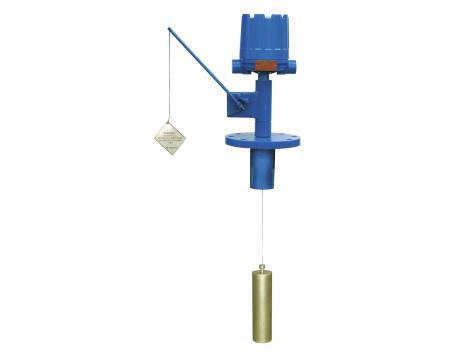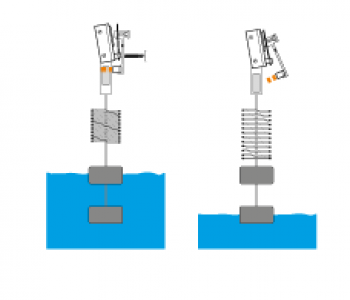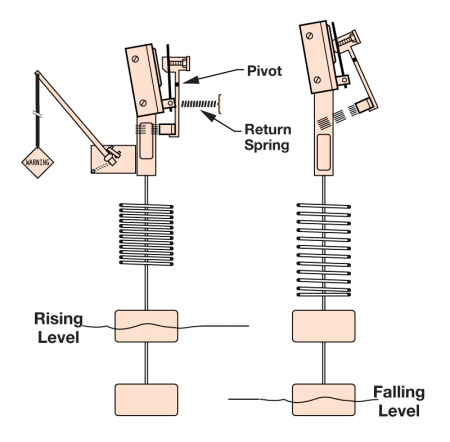
Single-Stage Switches
Series A10 displacer type level measurement units are wide differential units calibrated to actuate as a liquid level reaches a given displacer and to deactuate when the level reaches a second displacer. Single stage, wide differential displacer switches are factory calibrated yet field-adjustable to operate over a wide level differential band.
The minimum differential band is approximately 6 inches (152 mm) in water and varies somewhat with liquid specific gravity. The maximum differential is determined by the length of the displacer suspension cable. Series A15 units are calibrated to operate over a narrow level differential band and are ideally suited for liquid level alarm applications on either high or low level.
Dual-Stage Switches
Series B10 displacer type level measurement units are wide differential tandem switches that are factory calibrated with a choice of several switch operating sequences designed to meet virtually any application.
Series B15 units are narrow differential tandem switches that are factory calibrated. Each switch actuates at a different level.
Tri-Stage Switches
Series C10 displacer type level measurement units utilize three electrically separate control signals in a selected sequence in response to liquid level changes.
Series C15 units are wide differential switches with a choice of several operating sequences combining wide and narrow level differential and are factory calibrated.


 Operation is based upon simple buoyancy, whereby a spring is loaded with weighted displacers, which are heavier than the liquid. Immersion of the displacers in the liquid results in buoyancy force changing to net force acting on the spring. The spring compresses as the buoyancy force increases.
Operation is based upon simple buoyancy, whereby a spring is loaded with weighted displacers, which are heavier than the liquid. Immersion of the displacers in the liquid results in buoyancy force changing to net force acting on the spring. The spring compresses as the buoyancy force increases.